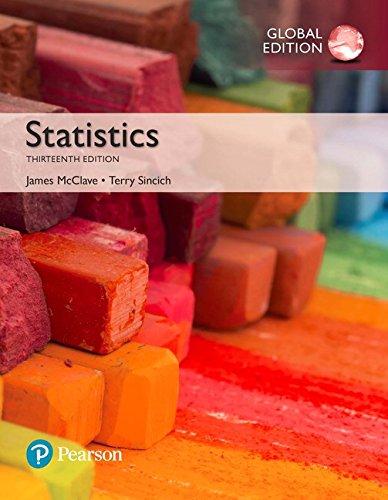Light-to-dark transition of genes. Refer to the Journal of Bacteriology (July 2002) study of the sensitivity of
Question:
Light-to-dark transition of genes. Refer to the Journal of Bacteriology (July 2002) study of the sensitivity of bacteria genes to light, presented in Exercise 9.142 (p. 520).
Recall that scientists isolated 103 genes of the bacterium responsible for photosynthesis and respiration. Each gene LO4 was grown to midexponential phase in a growth incubator in “full light” and then was exposed to three alternative light/dark conditions: “full dark” (lights extinguished for 24 hours), “transient light” (lights kept on for another minutes), and “transient dark” (lights turned off for 90 minutes). At the end of each light/dark condition, the standardized growth measurement was determined for each of the 103 genes. The complete data set is saved in the GENES file. (Data for the first 10 genes are shown in the accompanying table.) Assume that the goal of the experiment is to compare the mean standardized growth measurements for the three light/dark conditions.
Gene ID FULL-DARK TR-LIGHT TR-DARK SLR2067 -0.00562 1.40989 -1.28569 SLR1986 -0.68372 1.83097 -0.68723 SSR3383 -0.25468 -0.79794 -0.39719 SLL0928 -0.18712 -1.20901 -0.18618 SLR0335 -0.20620 1.71404 -0.73029 SLR1459 -0.53477 2.14156 -0.33174 SLL1326 -0.06291 1.03623 -0.30392 SLR1329 -0.85178 -0.21490 0.44545 SLL1327 0.63588 1.42608 -0.13664 SLL1325 -0.69866 1.93104 -0.24820 Based on Gill, R. T., et al. “Genome-wide dynamic transcriptional profiling of the light to dark transition in Synechocystis Sp. PCC6803.” Journal of Bacteriology, Vol. 184, No. 13, July 2002.
a. Explain why the data should be analyzed as a randomized block design.
b. Specify the null and alternative hypotheses for comparing the light/dark condition means.
c. Using a statistical software package, conduct the test you set up in part
b. Interpret the results at a = .05.
d. If necessary, employ a multiple-comparison procedure to rank the light/dark condition means. Use an experimentwise error rate of .05.
Step by Step Answer:






